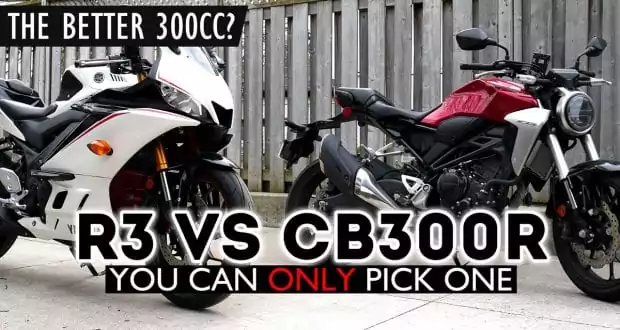The beginner motorcycle segment has more options available for new riders than it has in a long time. So while many of us are stuck in lock downs and some dealerships are even closed down, let’s look at how two beginners motorcycles compare, in this Honda CB300R vs. Yamaha R3 walkaround article and video.
Both of these motorcycles are beginner friendly, so if you’re new to riding, you might be considering them, so we’ll be covering the differences and similarities between the Honda CB300R and the Yamaha R3, what kind of power they both have, having a look at the ergonomics, and making comparisons on seat height, weight, wheelbase, suspension, tires, and brakes.
This won’t be a full review of both motorcycles (those will come later), instead we’ll be examining the components of the motorcycle and their performance and riding characteristics in order to answer the following questions:
- What are the differences between the two motorcycles?
- Does the Yamaha R3 live up to it’s looks?
- If the CB300R is the slower bike, does that mean you shouldn’t buy it?
- Which of these motorcycles is right for you?
Introduction
The Yamaha R3 brings full fairing, supersport styling to the beginner motorcycle class. We can tell from first glance that the R3 is aimed at the beginner motorcyclist who wants to one day graduate up to a full size supersport like the Yamaha R6. First we have the Yamaha R3, and with it’s full fairing look we can tell right away this motorcycle is targeted at the new motorcyclist who wants to be on a 600cc supersport like the Yamaha R6.
On the other hand, the Honda CB300R brings a neo-retro look. It doesn’t pretend to be a race bike, and it isn’t performance-oriented. The CB300R was designed to be affordable, simple, fun, and elegant. It isn’t pretending to be anything that it isn’t. While it may be the slower of the two motorcycles (both in terms of looks and in real world performance), it’s still packing a lot of the same motorcycle goodness and beginner friendliness as the R3 does.


Honda CB300R vs Yamaha R3 Comparison
Engine
The Honda CB300R comes with a very efficient 286cc single cylinder fuel-injected motor, whereas the Yamaha R3 comes with a 321cc twin cylinder fuel injected motor. Both motorcycles come paired with six speed transmissions.
The difference between the single cylinder engine and the twin cylinder engine is one of the most defining characteristics of these two motorcycles.
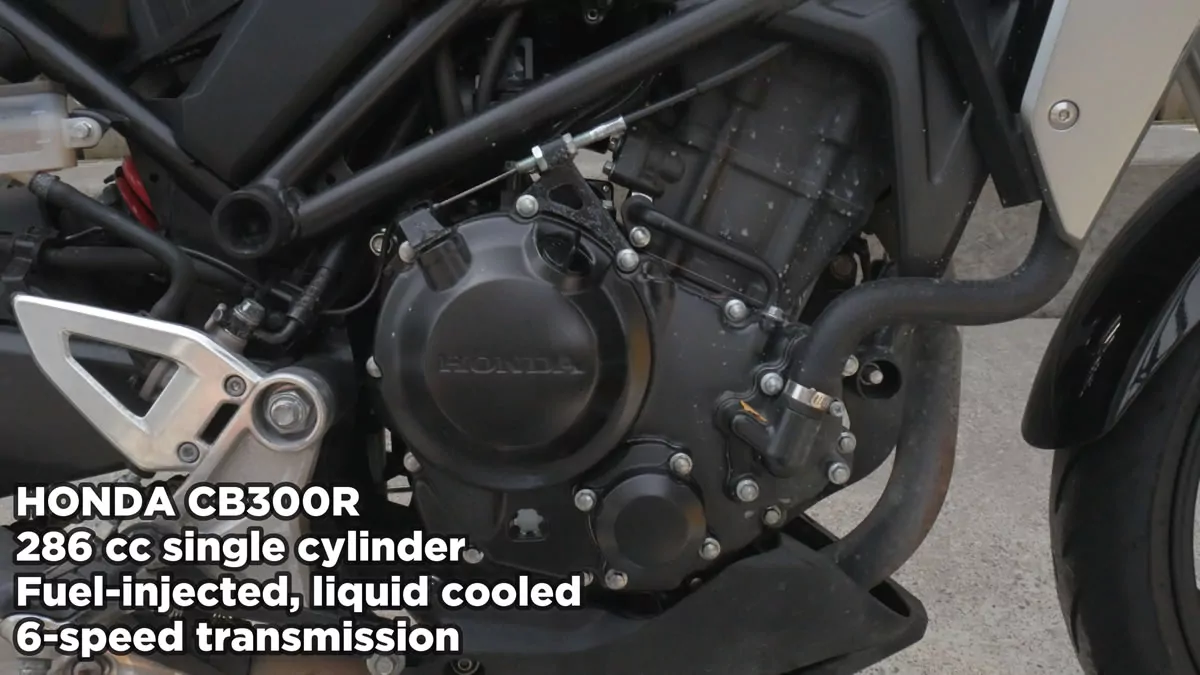
Power
The Honda relies on one cylinder to do all the work, whereas the Yamaha motor shares the load between two cylinders. Not only that, but when we look at the actual displacement size of both motors, Honda’s 286cc single is roughly 10% smaller than Yamaha’s 321cc motor.
One less cylinder and a smaller motor means the Honda CB300R makes 31 horsepower, whereas the twin cylinder Yamaha R3 makes 42 horsepower. The power advantage definitely goes to the Yamaha R3.
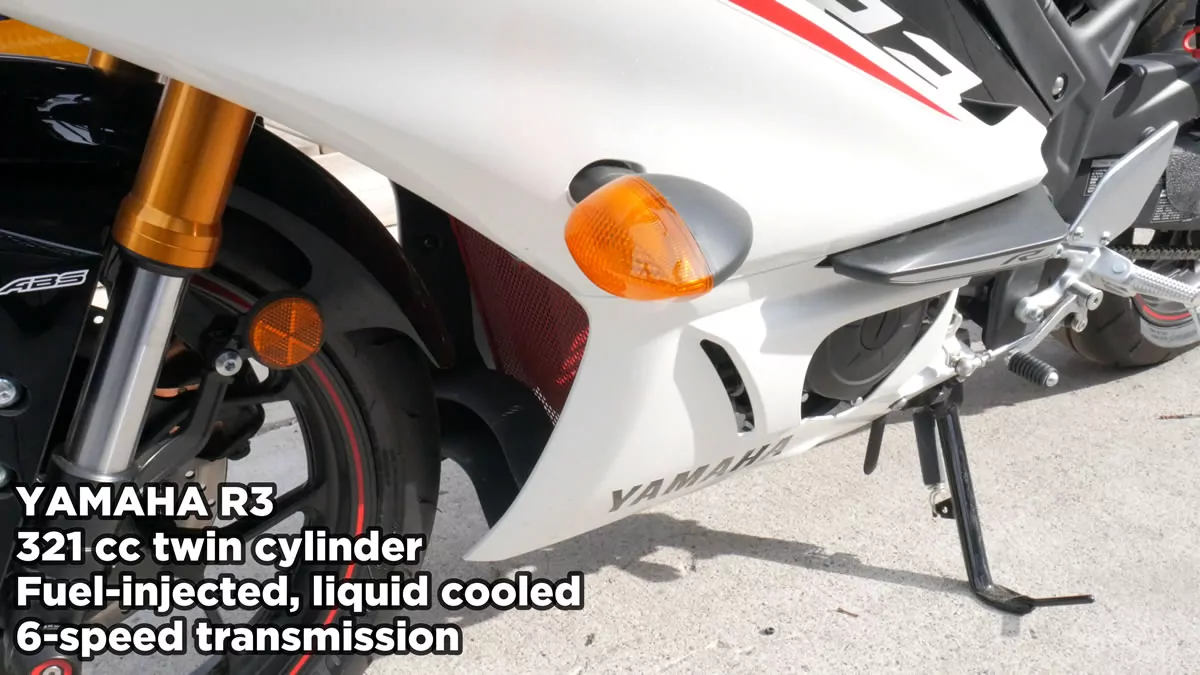
Ergonomics
The ergonomics of the Yamaha R3 and the Honda CB300R are very different. The R3’s handlebars are down, and low, meaning this bike will put riders in a more aggressive position. It’s nicer for tucking in at high speeds, getting a little less wind on your chest that can slow you down and tire you out, but the position won’t be as comfortable for long rides.
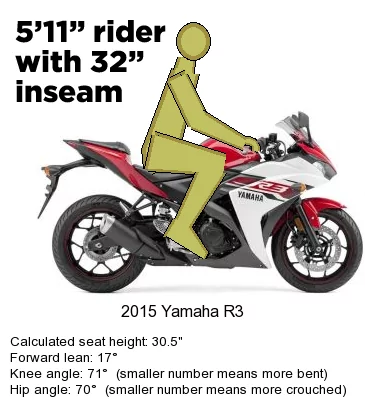
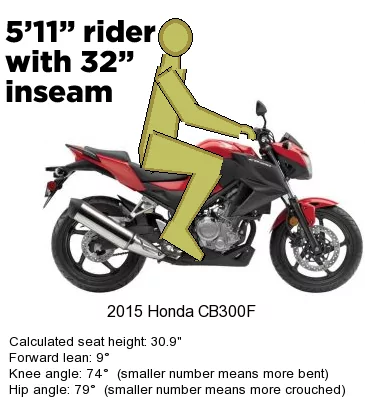
On the other hand, the Honda CB300R’s handlebars come up nicely above the forks, giving you a much more upright seating position. This is more comfortable for inner city commuting and stop and go traffic, but you might get more wind on longer rides. If you’re thinking of getting taking highway rides on the CB300R, a small fly screen or windshield to deflect some of the wind is probably a good idea.
Seat height
Numbers on the seat height seem to differ from one source to another, but both on paper and in person the Honda CB300R seems to have a taller seat height than the Yamaha R3 by about half an inch to a full inch.
However, it’s important to note that seat height isn’t everything. The shape of the seat also makes a big impact. For example, a wide seat would spread your legs further apart, making it harder for short riders to touch the ground. Likewise, the location of foot pegs can also make touching the ground more difficult on one motorcycle versus the other.
For my body, I found the location of the foot pegs made touching the ground on the CB300R more awkward then the extra 0.5″ to 1″ of extra seat height did. If you’re a short rider and seat height is a concern, you should go to a dealership or two and sit on both bikes to figure out which motorcycle fits you best.
Weight
The Honda CB300 weighs in at a wet weight of 313 lbs, compared to the 368 lb wet weight of the Yamaha R3. That’s a 55 lb, or 17% difference between the two motorcycles.
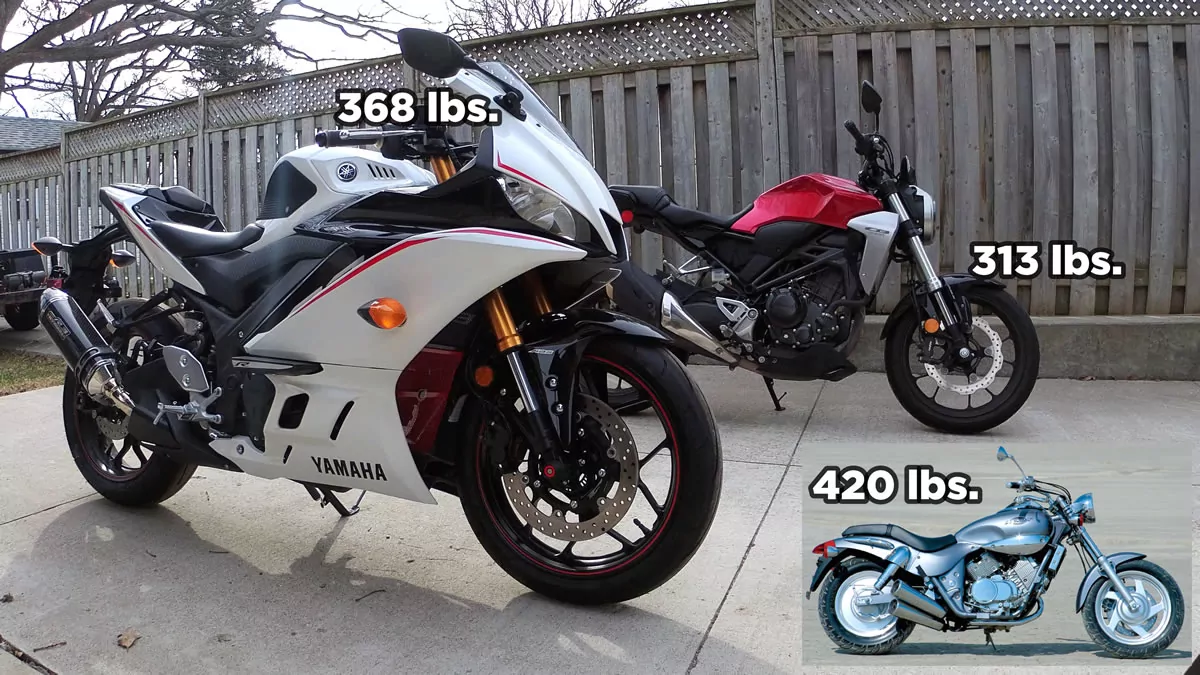
Note: It’s not that either motorcycle is particular heavy. To put it in perspective, my own 250cc from just over a decade ago weighed about 420 lbs wet. It isn’t that the Yamaha R3 is a japanese sumo, it’s just that the Honda CB300R is freakishly lightweight.
Wheelbase
Part of what contributes to the Honda CB300R’s light weight is that it is an overall slightly smaller motorcycle, as evident by the wheelbase of the two motorcycles. Wheelbase is the distance between the front axle and the rear axle. The CB300R’s wheelbase is 1″ less than that of the Yamaha R3, meaning the CB300R is less long.
Typically a shorter wheelbase means a better handling motorcycle (if all other things were equal), however in this case, both motorcycles have rather short wheelbases and handle well.
Suspension
Both the Honda CB300R and the Yamaha R3 have 5” of front suspension travel. However, the R3 has an extra 1” of rear travel (5” on the Yamaha R3 compared to 4” on the Honda CB300R), meaning the R3 should take bigger bumps a little bit better in most instances.
Note: Don’t be fooled. Having more suspension travel doesn’t necessarily mean that the ride will be more comfortable. The positioning of the CB300R might actually make the rider a little more comfortable due to the ergonomics we already talked about, but this will also come down to rider preference.
Tires
Under the suspension are similar tires, both the CB300R and the R3 are rocking a 110 front tire. Interestingly, the CB actually has a fatter rear tire, a 150 to the R3’s 140. The impact should be minimal but it’s worth pointing out strictly because of how many motorcyclists think they’ll only be cool if they put a fatter rear tire on their bike.
Note: The Yamaha R3 I had on hand was actually sporting a 150 rear tire, not a 140 as my online research led me to believe. At this moment it’s not clear which years came with a 140 rear versus a 150 rear, or what the situation is exactly with the R3 rear tire.
Brakes
Both tires come to a stop thanks to single disk brakes front and back. Neither the Honda CB300R nor the Yamaha R3 are known for having the most impressive brakes, luckily both motorcycles are available with Anti-Lock Braking Systems (ABS) either optional or mandatory depending on where in the world you’re located.
Note: Some testers believed that the R3 brakes may have been improved starting from 2019 models. No confirmation from Yamaha on this at this time.
Questions and Answers
Now that we’ve covered all of the differences and similarities between these two motorcycles, it’s time to answer the three questions we had going into this Honda CB300R vs. Yamaha R3 comparison.
1. Does the Yamaha R3 live up to its looks?
Yes, the Yamaha R3, for a beginner motorcycle, absolutely lives up to it’s looks. 42 horsepower from a 321cc motor is great. My own 250cc motorcycle from over a decade ago made 2/3 the power and I still took it on many multi-day trips with highway riding.
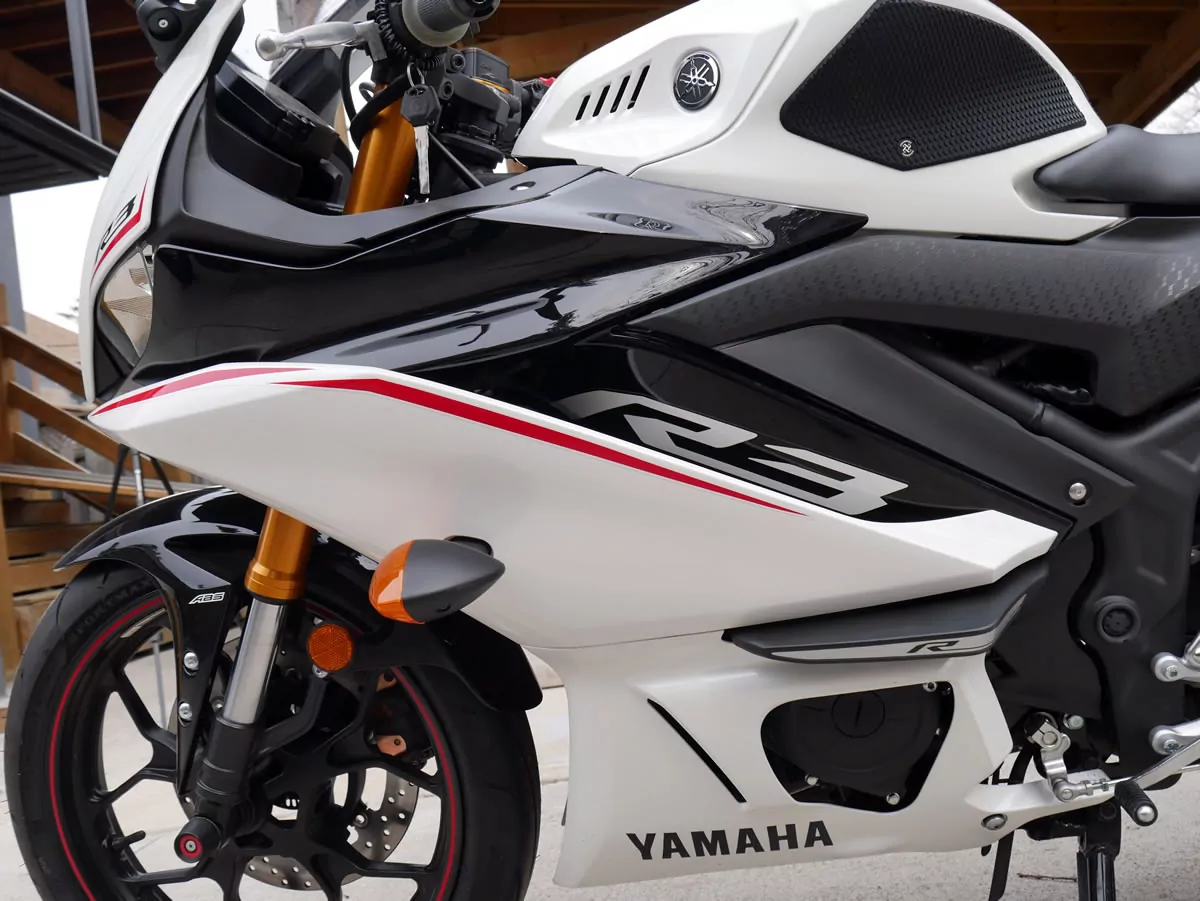
The R3 will have enough power for short highway trips. If you want a beginner motorcycle that looks like a supersport and makes good power for it’s small size, this is it.
2. If the CB300R is the slower bike, does that mean you shouldn’t buy it?
The CB300R is the slower motorcycle. It uses a single cylinder instead of two cylinders, and it’s an overall smaller motor, but that doesn’t mean you shouldn’t consider it. The bike is very light, and not very big. For some smaller riders, or riders who don’t need to have the fastest bike in their class, it’s totally adequate.
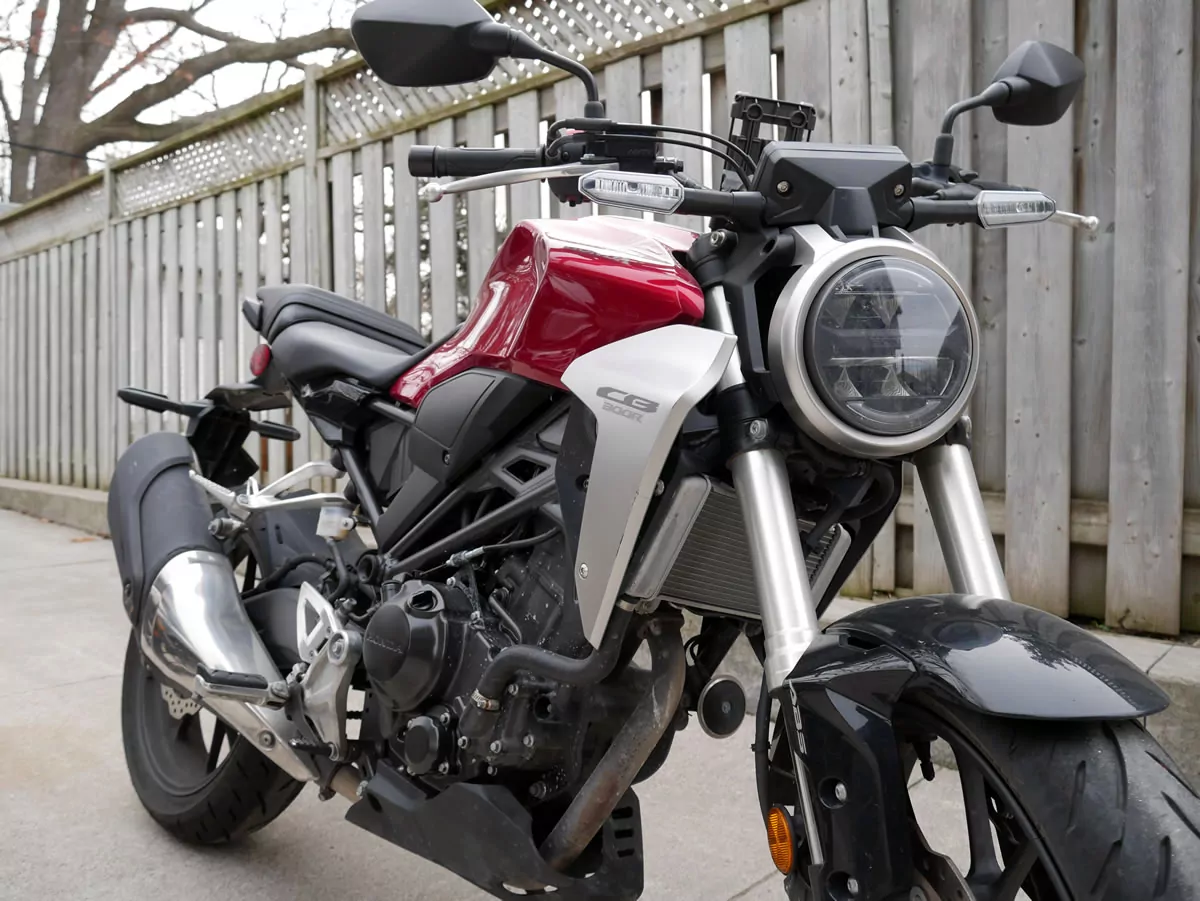
The CB300R is also very comfortable, very simple, very fuel efficient, very reliable, easy to service, and a very sensible way of learning how to ride motorcycles in relative safety.
3. Which of these motorcycles is right for you?
Now that our Honda CB300R vs Yamaha R3 Comparison is over, which of these motorcycles should you get?
If you’re looking for a basic beginner motorcycle that will be as comfortable and as easy to ride as possible, it does not get much simpler than the Honda CB300R. If you don’t need a motorcycle to look like a supersport even though it isn’t, you won’t go wrong on a CB300R.
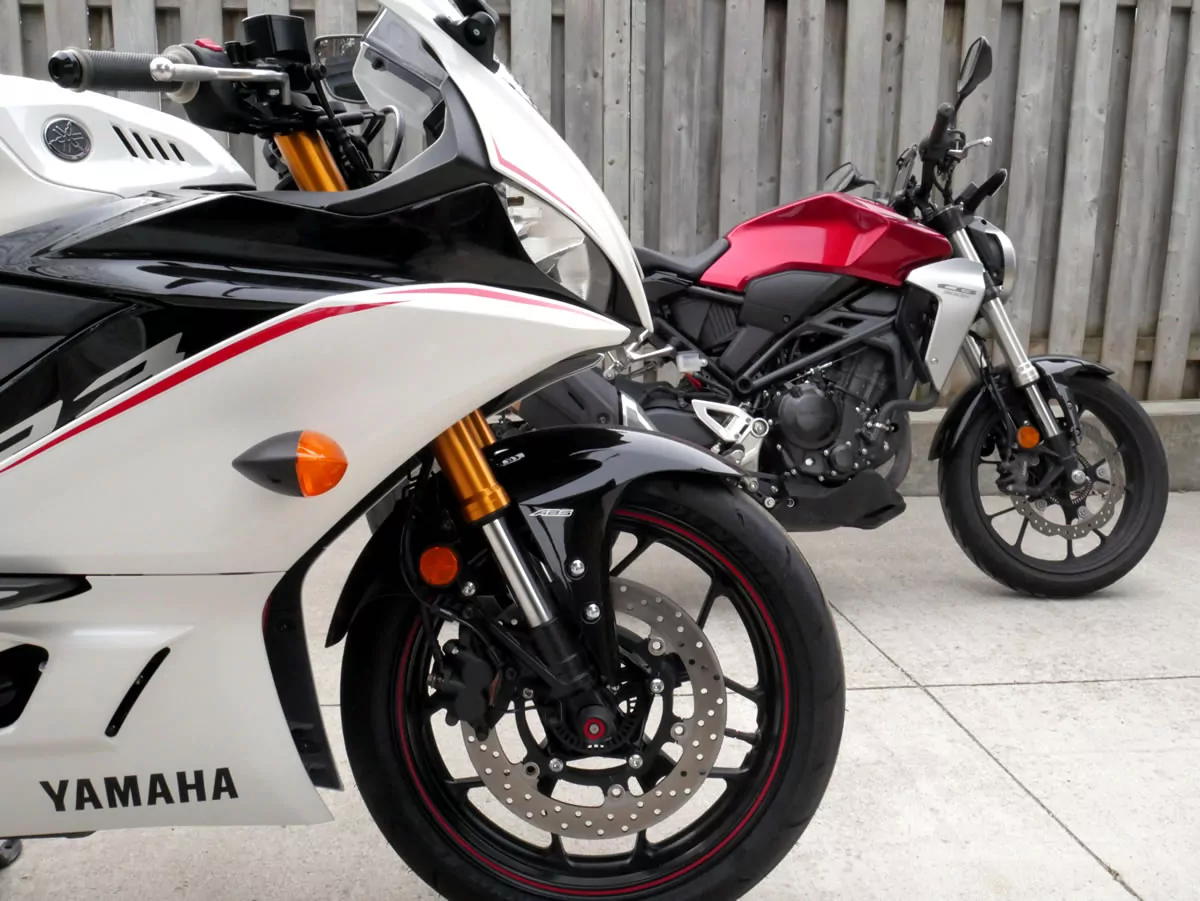
However, if for licensing or insurance reasons you’re limited to a certain motorcycle displacement for a certain amount of time, the Yamaha R3 gives you 33% more top end horsepower. Likewise, if you’re a shorter rider, but you have experience, and you just want the most power you can get in a small package, the Yamaha R3 is an excellent small motorcycle.
COMMENTS: Which bike do you prefer, the R3 or the CB300R? Leave a comment and let me know!
 YouMotorcycle Motorcycle Blog – Motorcycle Lifestyle Blog, MotoVlog, Motorcycle Reviews, News, & How-Tos
YouMotorcycle Motorcycle Blog – Motorcycle Lifestyle Blog, MotoVlog, Motorcycle Reviews, News, & How-Tos
